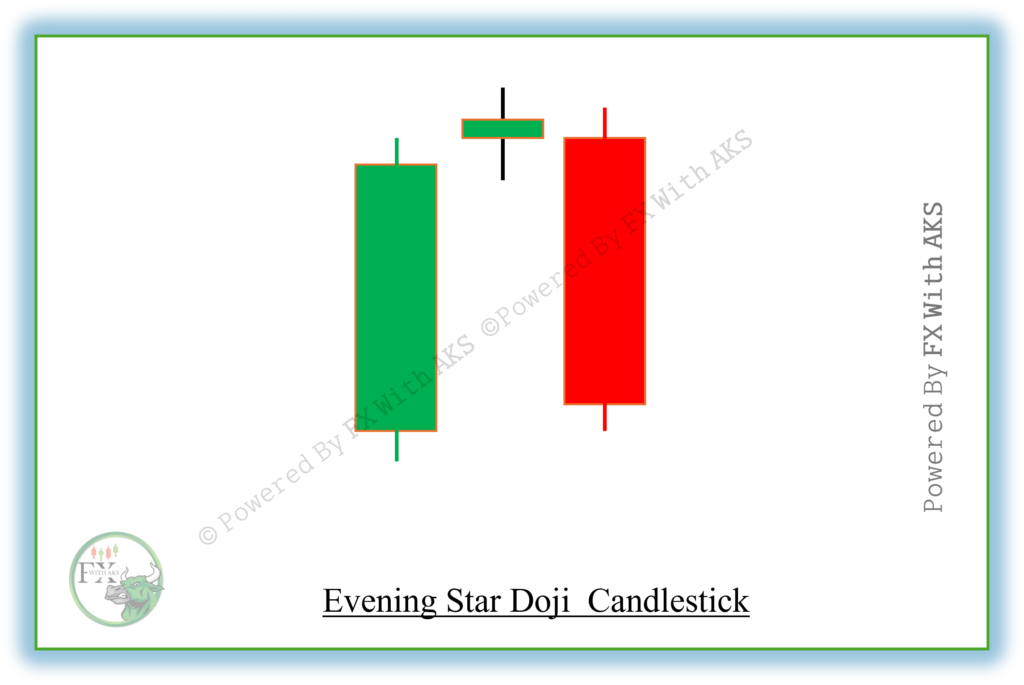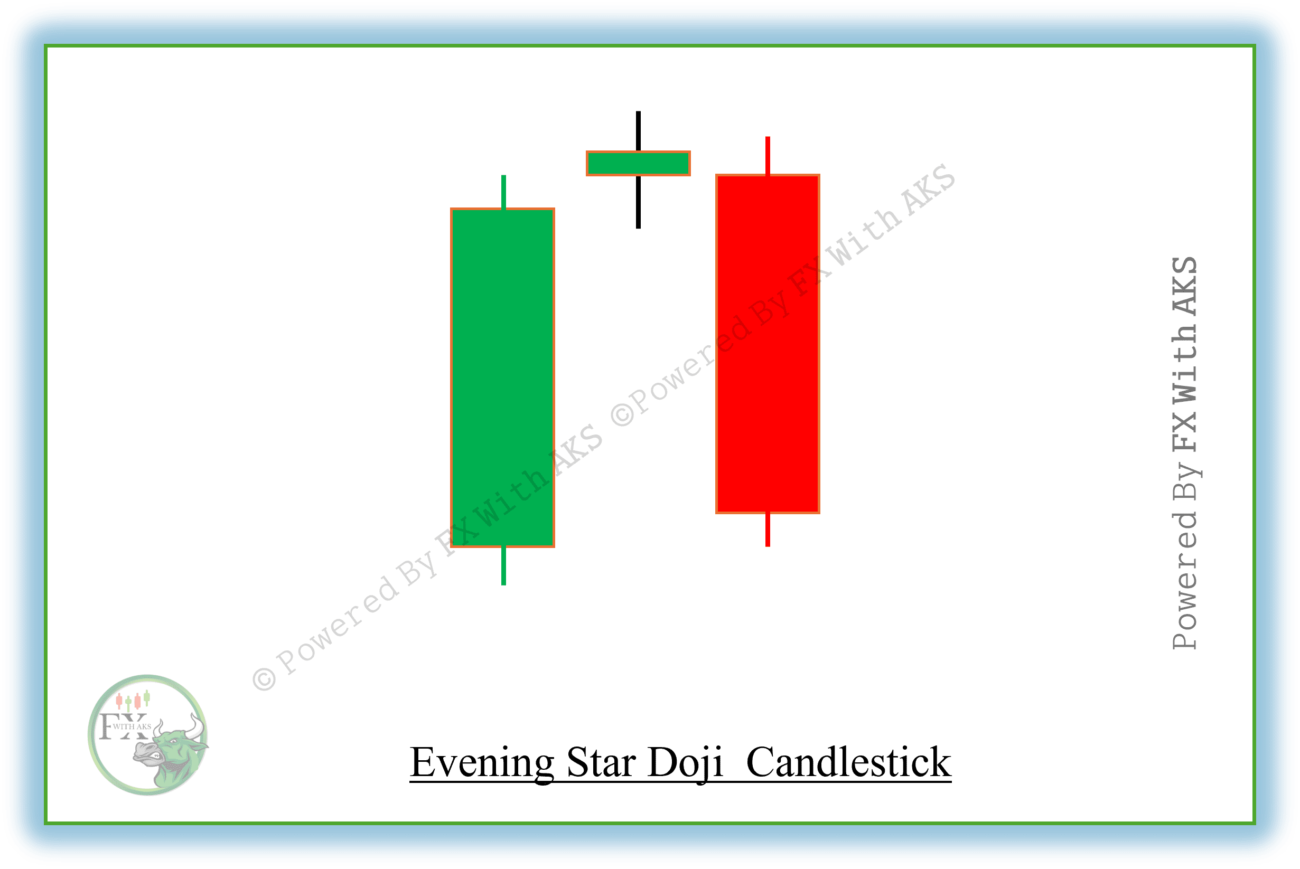The Evening Star Doji is a bearish reversal candlestick pattern that typically appears at the top of an uptrend. It’s a variation of the standard Evening Star, but with a Doji in the middle, making the signal even stronger due to the clear indecision it represents.
🕯️ Structure of the Evening Star Doji Pattern
It consists of three candles:
- First Candle:Evening Star Doji
- A large bullish (green/white) candle.
- Confirms strong uptrend momentum.
- Second Candle (Doji):
- Opens above the first candle’s close (gap up).
- A Doji (open ≈ close), showing indecision or market balance.
- Signals a potential pause or loss of momentum.
- Third Candle:
- A large bearish (red/black) candle.
- Closes well into the body of the first candle, ideally below its midpoint.
- Confirms that bears are taking over.
javaCopyEdit ▲ ← Bullish Candle
┼ ← Doji (small body, long wicks)
▼ ← Bearish Candle (engulfs most of the first)

📈 Interpretation
- After an uptrend, buyers appear dominant (first candle).
- The Doji shows uncertainty and a potential turning point.
- The final bearish candle confirms a reversal is likely underway.
- Traders may view this as a signal to sell or take profits.
✅ Ideal Confirmation Factors
- Appears at the top of an uptrend.
- Doji forms a gap up (though gaps are more common in non-24hr markets like stocks).
- Third candle has strong volume and a close below the midpoint of the first candle.
- Additional confirmation from RSI divergence, MACD cross, or resistance levels adds strength.
🔁 Comparison with Similar Patterns
| Pattern | Middle Candle | Signal | Trend Direction |
|---|---|---|---|
| Evening Star | Small body | Bearish | Top of uptrend |
| Evening Star Doji | Doji | Stronger Bearish | Top of uptrend |
| Morning Star Doji | Doji | Bullish | Bottom of downtrend |

